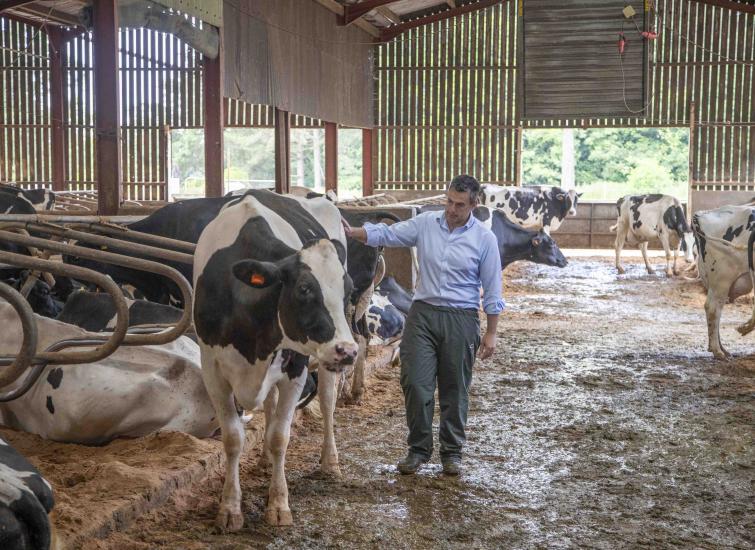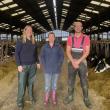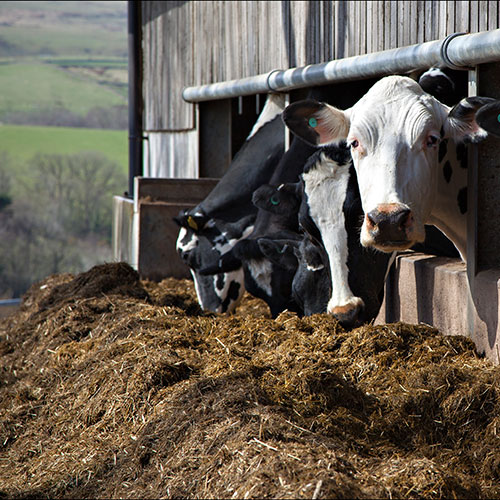After Advanced Nutrition's advice and using DC X-Zel for our transition cows we have found they are fitter and healthier. They don’t lose much condition after they calve, right through to lactation. They just calve down better.
Demonstrating AMS Efficiency
Eoghan Mullery, AMS judge for the Cream Awards and Technical Director at Advanced Ruminant Nutrition shares what he looks for on farm when it comes to driving efficiency.

Eoghan Mullery is quick to point out that efficiency isn’t just about robots, it’s a priority across all dairy systems. As a nutritionist, he sees efficiency as a core driver of performance, no matter the setup. But with the Cream Awards just around the corner, and a focus on Automated Milking Systems (AMS), he’s sharing the key things he’ll be looking for when judging top performing robotic herds. “Demonstrating AMS efficiency should highlight where the robots have added real value to the dairy in creating more efficiency around the milking process, labour, cow health and management,” says Eoghan. As an industry, we know that robots are generally recognised as a high fixed cost for harvesting milk. That means AMS farms need to work smarter to make those investments pay off. One of the most effective ways to drive efficiency is by increasing milk yield, something many high-performing robot farms aim for. In Eoghan’s experience the approach makes sense, “Higher production directly boosts income, especially income over feed costs, which is a vital efficiency measure on any dairy.”
“We’ve been tracking robot farms for the past ten years and, in almost all cases, the data backs this up. As UK dairy yields increase, understanding where that additional milk comes from has been a key driver of success.” Quite often it’s assumed early lactation cows’ milk yields must peak higher in order to lead to greater overall milk production through the lactation. Eoghan agrees that this is true, to a certain extent. “If you consider the limitations of UK forage quality, that peak has been shown to only get our lactational milk so high and we’ve to consider issues with poor forages such as low energy levels and the impact on cow health.”
So, what else can farmers focus on in terms of efficiency? When looking at the Cream award entries or indeed any AMS farm that Eoghan may be reviewing he is looking for an under-standing of lactational milk persistency. “Monitoring milk persistency is crucial if we want to understand current output and want to achieve more.”
A common example seen on UK farms is when a producer wants more milk, they will look to increase the starch and/or protein in early lactation with the aim of increasing peak milk yield. However, Eoghan stresses that this strategy often compromises rumen health and negatively impacts fertility further down the line.
“A more rounded approach aims to maximise peak yields but also maintain a high health status by doing all we can with nutrition and cow management to aid in lactational persistency.” Eoghan believes that the visit profile is also important and that doesn’t necessarily mean just more visits, but he says a common pitfall in robotic systems is accepting poor visits mid to late lactation. “Again, I can’t stress enough that we simply won’t achieve enough milk (without cow health being compromised) in the 1st 100/150 days of lactation to make up for the inevitable milk drop associated with less milking.”
Of course, achieving less milkings later in lactation efficiency involves more than simply increasing milk production.
“Another important metric we focus on is output per robot, while recognising that not every farm aims to maximise the number of cows per unit. Fewer cows producing more milk per box can be a strong driver of efficiency, but with the right approach, why not achieve both?!”
Optimising labour efficiency is another critical focus area. This can involve evaluating and enhancing various factors such as shed design and cow management to improve cow flow and access. Ultimately, the goal is to maximise voluntary cow visits, freeing up the team to focus on other vital aspects of the business, such as transition management.
“A proactive approach to cow health, especially in the transition period shows an understanding of that crucial few weeks of lactation. Our winners from last year demonstrated how to optimise transition management both through nutrition, the environment and management practices to positively impact fresh cow performance.”
“Mobility plays a critical role in supporting voluntary milking. To milk voluntarily and maintain a strong desire to visit the robot, cows must be confident on their feet,” explains Eoghan. “Preventing lameness and ensuring good foot health are essential. A mobile cow is more likely to visit the robot frequently and consistently throughout her lactation, which in turn supports higher milk production and a more stable visit profile.” This focus on the relationship between health, behaviour, and productivity was top of mind during Eoghan’s recent visit to France, where he explored alternative approaches to robotic milking. “It was a fantastic opportunity to exchange ideas and learn from different consultancy groups,” he said. “One key takeaway was their strong emphasis on precision nutrition for the established, high yielding robotic herds we saw. From a technical standpoint, it was valuable to share insights and approaches in this area.”
The trip also highlighted some contrasting ideas. “Interestingly the consultants we met tended not to get involved with aspects like foot health and cow comfort. This sparked some great discussions about how integrating data on milk and herd behaviour, such as visit frequency, refusals, rumination, lying times, provides a more comprehensive view of rumen and ration performance. It’s about understanding how these factors are interconnected.”
“France was a timely assessment of alternative approaches to robotic milking efficiency as we roll out our robot meetings in July. Following more than ten years of research and data collection, these meetings will reinforce our learnings and experience around efficiency - so watch this space!”
〈 BACK



